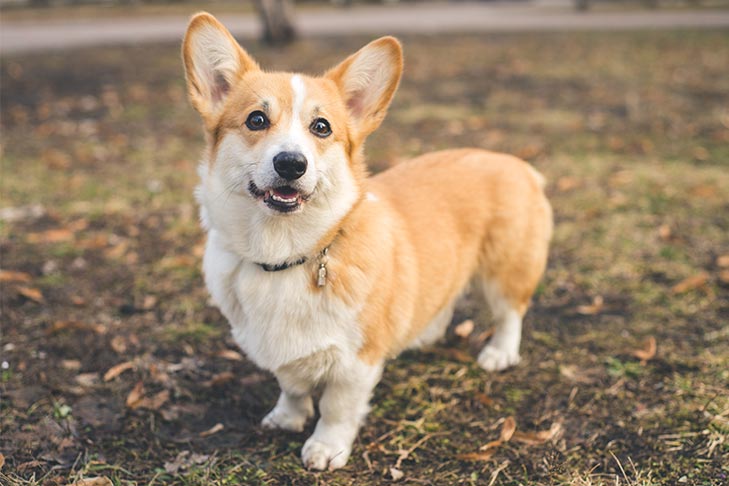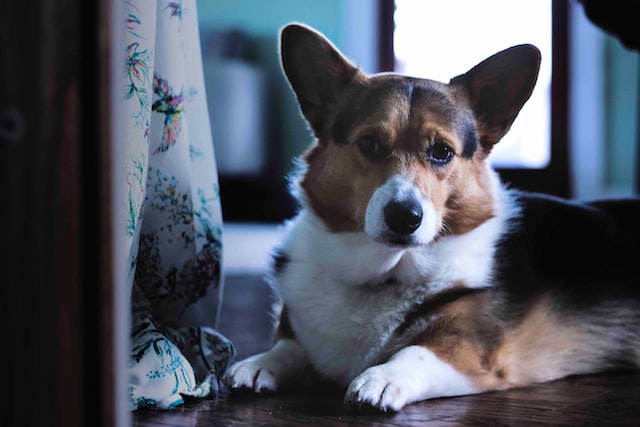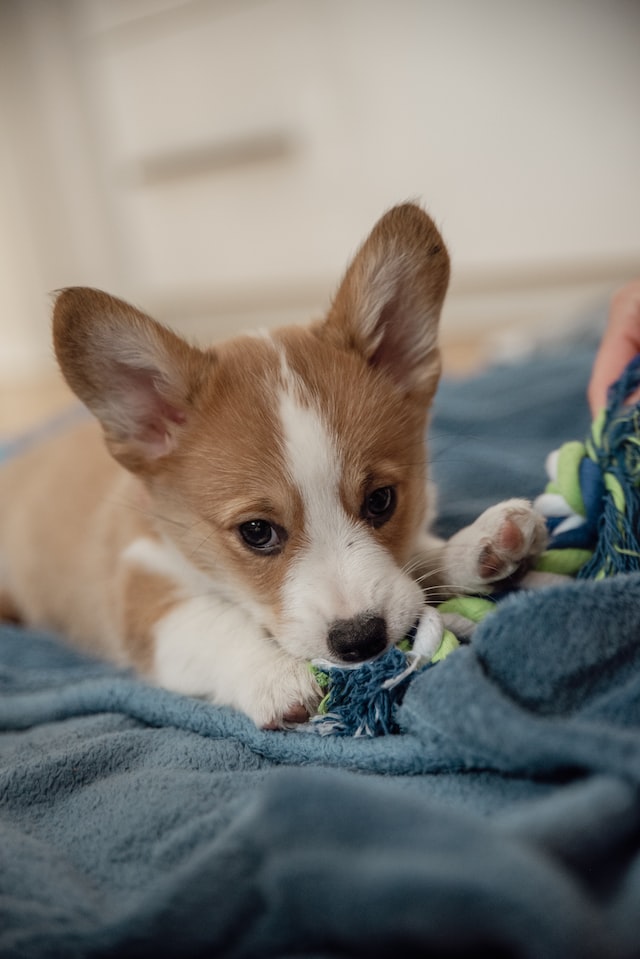
The Pembroke Welsh Corgi

Cute, smart and friendly the Pembroke Welsh Corgi is a great little companion. Favored by the British Royal Family they are considered the Royal Dog. In 1933 a Pembroke pup named Dookie won the heart of King George IV. Queen Elizabeth II shared her father’s love of the breed and had at least thirty Pembrokes during her reign. It is said that her corgis roamed the palace at will, and that the staff were not allowed to scold them.
The Pembroke Welsh Corgi is one of two Welsh corgis, the Cardigan Welsh Corgi being the other. People are often confused as to how the two dogs are related and whether or not they are one breed. In fact, they are two very distinct breeds.
Both corgis are very old. The Pembroke’s ancestry can be traced back to 1107 a.d. when their progenitor was brought to Pembrokeshire Wales by Flemish immigrants. These dogs were similar in appearance to an older version of the Schipperke and related to the Finnish Spitz. The Cardigan Welsh Corgi’s lineage can be followed back even further to 1200 b.c. They descend from the Dachshund/Teckel family of dogs brought to Wales by the Celts.
The two corgi breeds remained separate until a certain point in the early 19th century when some experts believe that a small amount of interbreeding occurred. It is known that interbreeding occurred in the early 1930’s when they were considered two different types of one breed. They were officially recognized as two separate breeds by both the English and American Kennel Clubs in 1934.
The two breeds look similar. The most obvious physical differences being tail length and ear shape. The Pembroke is either born with a short tail or docked and has erect slightly rounded to pointy ears. In contrast, the Cardigan has a long tail and rounded ears.

Both breeds are true dwarves. The word “corgi” translates from Welsh as “dwarf dog” or “working dog”. They are compact and sturdy with short muscular legs a deep chest and a fox-like head. Versatile, they performed many jobs on the farm, eventually developing into fearless cattle drivers. They would run among the cattle, nipping at their ankles while nimbly avoiding being trampled. They also became vigilant guardians of the herd.
While the PWC are athletic working dogs they also make a great family pet. They are playful, affectionate and very agreeable, fun dogs. Intelligent and eager to please they learn quickly, but they have an independent nature and can be stubborn. It is best to start their training early and socialize them well. A first-time dog owner shouldn’t be discouraged from raising a PWC but may need some help with training. A happy, well-behaved PWC is one who is exercised regularly and provided with mental stimulation. They excel at agility trials relishing the action and activity. They make very good guard dogs. Being cattle dogs at heart they may gently nip at the heels of the family children but only with the best of intentions!
PWC’s are long-lived, with a life span of 12-13 years. Like any breed, there are health issues they may be prone to. Prior to purchase the breeder and their line should be carefully vetted. The health issues to look out for when purchasing a Pembroke are skin disease, elbow and hip dysplasia, cataracts, congenital heart defects, Von Willebrand’s disease, undescended testicles and degenerative myelopathy.
Stats:
Origin- Pembrokeshire Wales
Height- 10 to 12 inches from the ground to the top of the withers
Weight- 30 lbs for males, 28 lbs for females
Nose- Black
Eyes- Oval
Ears- Erect, slightly rounded to pointed tips
Tail- No longer than 2 inches, docked as short as possible with no indentation
Colors- Red, Sable, Black and Tan, Fawn With or without white markings
Coat- Medium length, thick undercoat, coarse outer coat
Grooming- Need only brushing Note: Are heavy shedders
AKC Group – Herding